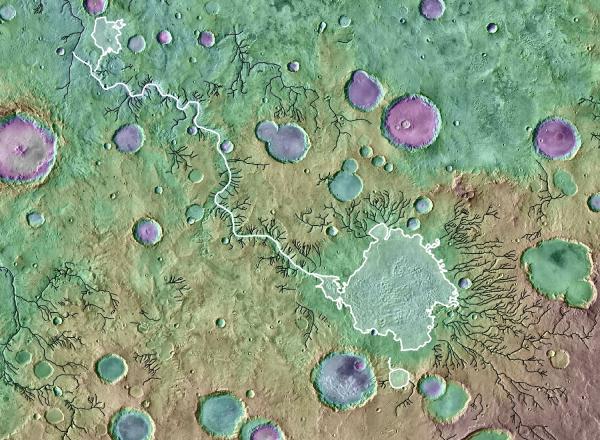Senior Scientist Daniel Berman led a team of other PSI scientists in producing a new U.S. Geological Survey Investigations map of Mars.
The map shows details of the source region of Shalbatana Vallis, which is one of the major outflow channels on Mars, thought to have formed by large flooding events during the Late Hesperian/Early Amazonian Periods. The channel emanates north from Orson Welles crater, a 120 kilometer diameter impact crater containing flat-topped and knobby blocks on its floor called chaotic terrain. Our mapping shows that the crater was once filled with sediment that was disrupted by collapse due to empty spaces in an underlying aquifer, leading to an outburst of water that filled the crater.
Light blue areas on the map surrounding Orson Welles show regions where the water overspilled the edge of the crater. This overspill has not previously been documented. The crater wall was breached to the northeast and Shalbatana Vallis was formed. The same process occurred in the collapse region to the east of Orson Welles named Aromatum Chaos, leading to the outflow channel Ravi Vallis extending to the east. Aromatum Chaos and Ravi Vallis also show previously unseen regions of overspill. Multiple levels of chaotic terrain and channel floor materials indicate multiple episodes of flooding interspersed with
continued collapse over long periods of time.
PSI’S Alexis Rodrigues, Cathy Weitz and David Crown are co-authors on the map.
The map, in 1:750,000 scale, may be viewed here.

